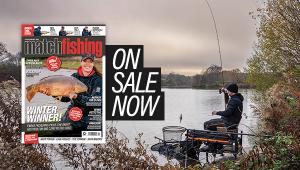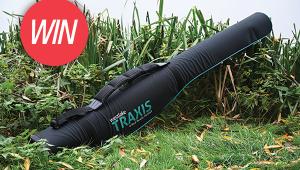Speed, Timing And Efficiency…
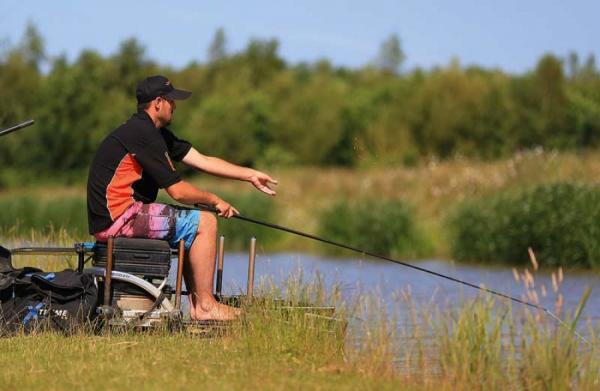
Dust off the metronome and get ready for a lesson in speed fishing from commercial master, Jimmy Brookes.
Welcome to Osprey Pool at Westwood Lakes, a strip lake stocked with F1s… and plenty of them! This lake is very typical of many modern commercial venues, where there’s a key skill set to learn that will help you win matches on this kind of venue.
By way of illustration, I actually hold the five-hour match record here with 570 F1s for 308lb. However, to achieve this I had to combine a range of little tricks and apply many small tweaks to my attack, which I’m hoping to reveal to you today!
Did Somebody Say Race?
This style may not be for everybody… “monotonous”, “boring”, “lack of skill”, “a fish race” and suchlike. Hang on, did somebody say race? Does that not ignite a competitive fuse? There is, however, a lot to be learnt about this whirlwind attack.
In reality, match anglers have been amassing fish in numbers for years. Tommy Pickering gained the title ‘The Bionic Bleaker’ back when the aim was to catch bleak from the rivers at lightning pace. The same applies to catching numbers of small roach on canals. When you go on a commercial, essentially nothing has changed except the end result looks slightly different. The same commitment and preparation are required.
Time Attack
My preferred line of attack here is to catch short and shallow. To achieve maximum efficiency there must be little time for distractions. For example, the time taken to fill a pole pot may only be two seconds. However, if I had to do this every time I caught a fish, with my target being 500 fish, that would mean I’d spend 1,000 seconds filling a pole pot. That 1,000 seconds equates to nearly 17 minutes, and in that time, I could potentially catch 40 fish… which could weigh an extra 15lb, or maybe more!
This is merely a paper exercise and probably obvious to the discerning match angler but certainly illustrates how important it is to analyse your actions in any genre of match fishing; after all, it is the weight at the end that matters.
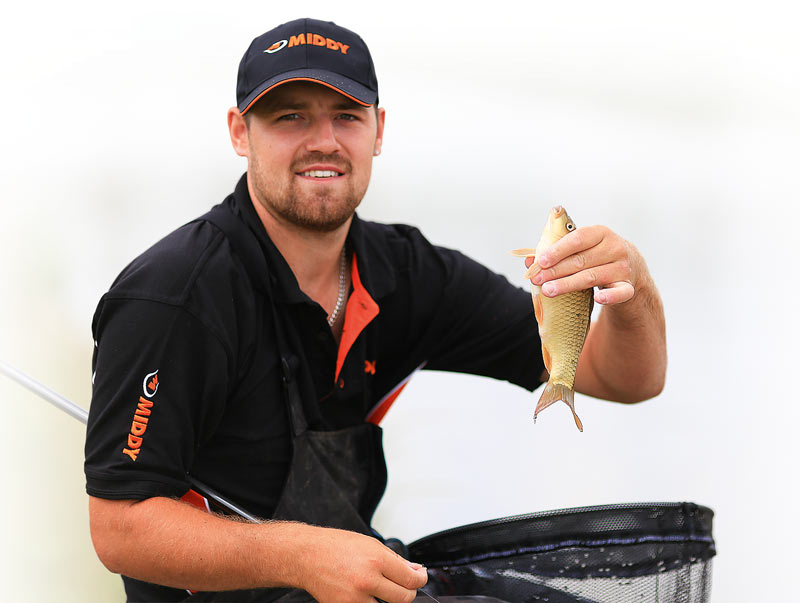
Put 300 of these in the net and a decent weight is on the cards.
Simplify Your Approach
An all too common mistake is to overcomplicate tactics when approaching a match. Some venues will always require a detailed plan but in this case the basic approach prevails.
If you find yourself at a crossroads in your match angling and your results rarely make the frame, then it’s time to consider going back to basics. Simplifying your attack and focusing on one simple approach will help you do this.
For today’s session and to demonstrate all of the above, I’ll introduce the rig. A good robust float is essential: a Middy Styrex Series 1 in a 4x10 size is my choice. Middy Lo-Viz 0.16mm line with a 0.12mm hooklength and a Middy KM-2 Hair Rig Carp size 20 hook completes this. A bulk of shot is simply placed on the hooklength knot loop. This is both a strong area of the rig and also alleviates the shot moving up and down the line as they are trapped between the knots.
Elastic choice is Middy Hi-Viz Shock Core Hollow 6-10 yellow, and when things really speed up and start to blur, Shock Core Hollow Pink. The choice of elastic is critical, as it needs to be soft enough so as not to be bumping the fish off but able to extract the F1s in a smooth, controlled manner.
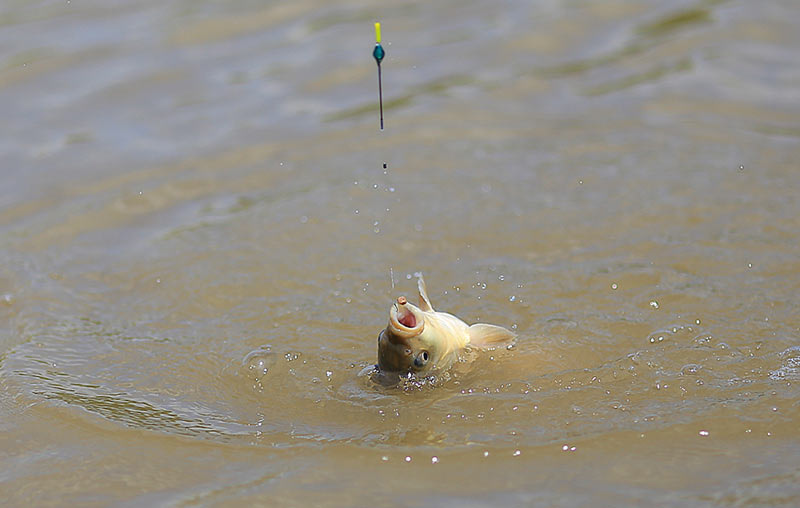
If you’re hooking fish in the top lip you know that your feeding, and the depth that you are fishing, is spot on.
Get Gluing!
Hook-bait choice is also simple: a 4mm hair-rigged pellet, but its preparation is an area of my approach worthy of analysis.
It’s not revolutionary, but the hardening of the hook bait is an essential element to stacking up high numbers of fish. The pellet inside the bait band is superglued in place and then given an outer shell with the finest nail polish available. The target for this epitome of robustness can be in excess of 50 fish! Feed pellets are simple again, the fishery’s own 4mms with nothing added.
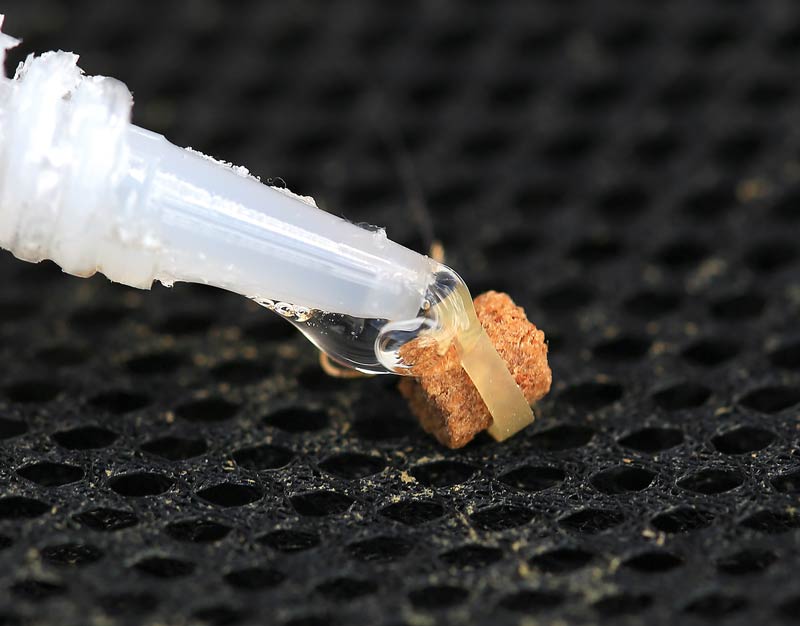
A dab of superglue, then varnish, helps make your hook pellets ultra-resilient.
Target Setting
So for today’s session, what sort of weight can I put together in two and a half hours? Despite this being a feature, I’m keen to set myself targets. It’s vital to do this in matches, and if I catch 10 fish in one 10-minute spell, I try and better it over the next 10 minutes.
It’s also important to try and hit bites. It sounds daft, but lots of people sit there happily missing two or three before they get a fish. I’m always experimenting with where I hold my pole tip in relation to the float. Sometimes holding a tight line to the float is better, while other times pausing when the float goes and then striking at bites works well.
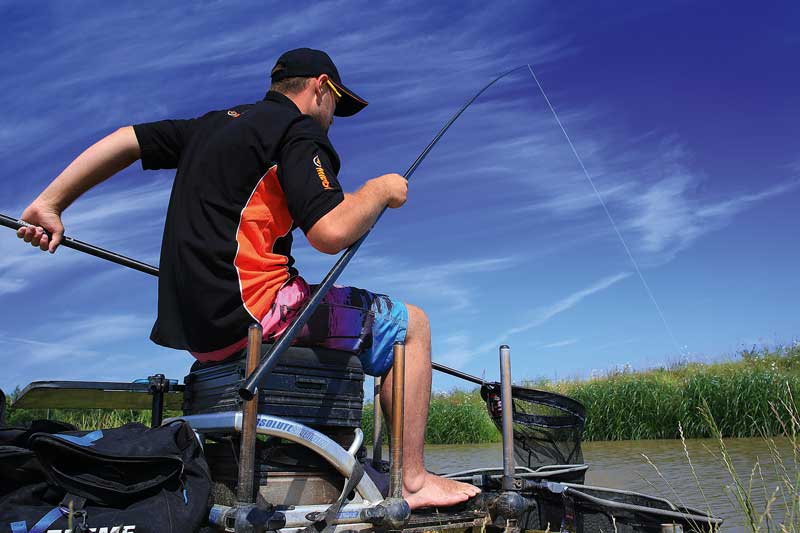
It is vital to have just the right length of elastic in your top kits to allow you land fish in the optimum time.
Feeding
It is vital to ensure that a steady stream of 4mm pellets is hitting the water from the off. It doesn’t need to be many; six to 10 at a time create constant noise and a fall of bait through the water attracting and holding fish in the swim. Every now and again, I stop feeding and simply slap my rig on the surface two or three times to trigger an instant bite and fish.
I have started the session fishing with my top kit plus two sections. While most anglers start with a top kit or a top kit plus one, starting that little bit further out simply helps you suck the majority of the fish from other anglers around you. I’ve got off to a flying start on this today, and slowly drawn the fish inwards with the fish unaware they are slowly being coerced to top kit range.
In a match situation, if you draw the fish in like this, you may find they become spooky at times. It’s vital to notice this and be prepared to follow them back out where they will regain confidence.
Jimmy’s Speed Fishing Tips!
1) Try to avoid breaking down pole sections, which wastes time and motion. This means a careful balance of elastic strength to fish size is needed; in today’s session a move to the Middy hollow pink certainly did the job. Simply ship back and lift the pole to net the fish.
2) Netting all fish is a rule at Westwood, so arm yourself with a nice shallow, lightweight landing net that allows you to quickly pan fish and grab them quickly.
3) Keep a mental tally on the numbers – you need to chart your progress.
4) Duplicate rigs are essential; the inevitable rig tangle has to be quickly dealt with.
In a timed two-and-a-half hours today, I’ve managed to catch 170lb. Deep down I know that the swim wouldn’t have been the same in full match conditions, but if anything this hectic session has allowed me to really practise my fast-pace techniques!
I make no apologies for not listing the normal technical intricacies but the route to success so often lies in a simple, calculated and rehearsed approach, which was highlighted in the recent Daiwa Festival at Westwood with the frame being topped by Andy Bennett and Will Raison, first and second respectably. I don’t think there is any need to contact these two and scrutinise their preparation.
Does It Always Work?
It is worth noting that at this venue, and many others like it, many other methods also take the prizes but the rules of efficiency and preparation still prevail. Match conditions may not afford the luxury of a constant queue of F1s for the full five hours from the same shallow line, but with a skilful rotation of your peg, where’s your limit?
Perhaps clattering the fish in this way for the first part of the match, and then fishing more traditionally to top up your weight for the latter part of the match is the way forward?
Utilising this basic and rehearsed approach will certainly ensure you catch the optimum number of fish for that given period of the match. Good Luck!

Anyone who says there is no skill in putting a haul like this together has serious issues!
Like what you see?

Or buy a single issue
- Log in or register to post comments

